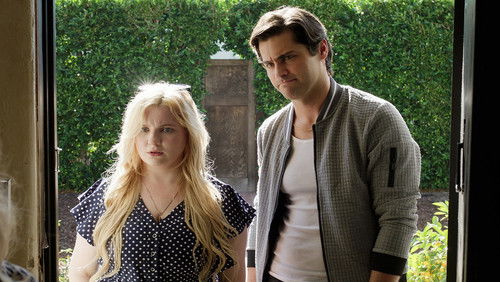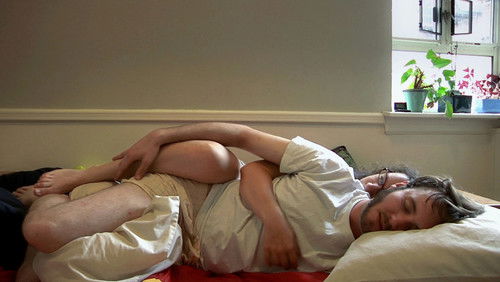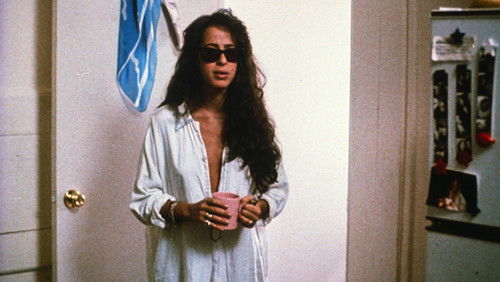Geld! Geld! Geld! (1928)
59KGeld! Geld! Geld!: Directed by Marcel L’Herbier. With Brigitte Helm, Marie Glory, Yvette Guilbert, Pierre Alcover. The business tycoon Nicolas Saccard is nearly ruined by his rival Gunderman, when he tries to raise capital for his company. To push up the price of his stock, Saccard plans a publicity stunt involving the aviator Jacques Hamelin flying across the Atlantic to Guyana and drilling for oil there, much to the dismay of Hamelin’s wife Line. While Hamelin is away, Saccard tries to seduce Line. Line finally realizes that she and her husband were pawns in Saccard’s scheme, and she accuses him of stock fraud.
“Near the end of the silent cinema period, at opposite ends of Europe, two films were being planned on the subject of money or capital: Sergei M. Eisensteinu0026#39;s project for a film based on Karl Marxu0026#39;s Capital, and Marcel Lu0026#39;Herbieru0026#39;s film adaptation of Emile Zolau0026#39;s Lu0026#39;Argent. Eisensteinu0026#39;s project, unfortunately, never got beyond the preliminary stage of diary notes, recorded discussions with G.V. Alexandrov, and the rough outline of a scenario. Lu0026#39;Herbieru0026#39;s project, of course, was completed and released as Lu0026#39;Argent, in the midst of controversy, critical condemnation as well as acclaim, and uncertain commercial success, at least in France.u003cbr/u003eu003cbr/u003eUndoubtedly influenced by Abel Ganceu0026#39;s experiments with camera mobility, Lu0026#39;Herbier turned this very free, modern-day version of Zolau0026#39;s celebrated novel into a series of pretexts for outbursts of striking cinematic excess, creating a strikingly modern work marked by its opulent, over-sized sets and a complex, multi-camera shooting style. The result is a film resolutely split between narrative and spectacle, between straightforward storytelling scenes typically dominated by shot-reverse shot cutting and chaotic, exciting impressionist sequences, as when, at the Paris stock market (shot on location) a camera hanging from a pulley apparatus high above the trading floor sweeps down on the traders. The effect, presumable, means to evoke the irrational frenzy of capitalist from a decidedly right-wing perspective.u003cbr/u003eu003cbr/u003eIf Ganceu0026#39;s Napoleon and Carl Th. Dreyeru0026#39;s La Passion de Jeanne du0026#39;Arc constitute the apex of big-budget historical reconstruction films in the French silent cinema, then Lu0026#39;Argent certainly can be taken as the culmination of the modern studio spectacular. With a five-million franc budget, Lu0026#39;Herbier was given privileged access to the Paris Bourse for three days of shooting (with 1,500 actors and over a dozen cameramen) and was permitted to electrify the Place de lu0026#39;Opera in order to shoot a night scene of the huge crowd awaiting news of Hamelinu0026#39;s solo transatlantic flight. At the newly opened Studios Francoeur, Lazare Meerson and Andre Barsacq constructed immense set decors, including an enormous bank interior, several large offices and vast apartments, a dance stage for Saccardu0026#39;s celebration party, and an unusual circular room next to Gundermannu0026#39;s office whose entire wall length was covered with a giant world map.u003cbr/u003eu003cbr/u003eMany of these studio spaces have smooth, polished surfaces and are stylized to the point of exhibiting little more than walls, ceilings, and floors. This stark simplicity, especially in such monumental designs, undermines any appeal to verisimilitude and tends to dissolve the boundaries differentiating one space from another. The indeterminacy of these decors, although exemplary of the modern studio spectacular, thus specifically functions to further abstract the filmu0026#39;s capitalist intrigue. Together withe crowds of extras that often traverse the frame and chief cameraman Jules Krugeru0026#39;s selection of slightly wide-angle lenses and high- and low camera positions, especially for the frequent long shots or extreme long shots they produce a consistently deep-space mise-en-scene and larger than life capitalists. Furthermore, the highly stylized or generalized milieu of the film actually serves to foreground the nationalistic and class-based terms of the intrigue, articulated through the casting, and allows them to read all that more clearly.u003cbr/u003eu003cbr/u003eThe Modernizing strategy that shapes Lu0026#39;Argentu0026#39;s set decors and deep-space mise-en-scene was also governed, finally, by a loosely systematic discursive which many French filmmakers shared in the late 1920s. Generally, the French tended to privilege the specifically u0026#39;cinematicu0026#39; elements of framing and editing – close ups (especially of objects), unusually high and low camera position, extensive camera movement, superimpositionu0026#39;s and dissolves, various forms of rhythmic montage, associative editing. But Lu0026#39;Herbieru0026#39;s Lu0026#39;Argent offers another, perhaps even more interesting model for the way its reflexive style ultimately helps to articulate the filmu0026#39;s critique of capital.u003cbr/u003eu003cbr/u003eAt least two particular features of this film practice loom large in Lu0026#39;Argent. The first feature as an absolutely unprecedented mobile camera strategy, whose high visibility and extreme dynamism render its effect peculiarly ambiguous. The range and extent of the filmu0026#39;s camera movement is unmatched except perhaps by that in Ganceu0026#39;s Napoleon (for which Kruger was also chief cameraman). Largely because of such unusual camera movements, in Lu0026#39;Argents space oscillates uncannily between the fixed and the fluid. A second feature of the filmu0026#39;s discursive practice is its rather unconventional editing patterns, which sometimes work in tandem with camera movement. There is the uniquely persistent pattern of cutting a stable shot as a sudden camera movement becomes perceptible, which creates a slightly jarring effect in the filmu0026#39;s rhythm that ruptures its sense of spatio-temporal continuity and foregrounds the very construction of filmic space-time.u003cbr/u003eu003cbr/u003eThe reflexivity of this discursive practice marks Lu0026#39;Argent as a Modernist text, of course, at least to the extent that the materials of the film medium and their deployment as a disruptice system become an ancillary subject of the film. Lu0026#39;Argents framing and editing techniques, in conjunction with set design and acting style or casting, more closely resemble those of Jean Renoiru0026#39;s Nana or Dreyeru0026#39;s La Passion de Jeanne du0026#39;Arc, both of which serve to subvert the conventions of another genre, the historical reconstruction. Yet reflexivity here bears a subversive significance that exceeds the genre of the modern studio spectacular precisely because of Lu0026#39;Argent is a story of capital.u003cbr/u003eu003cbr/u003eLu0026#39;Argentu0026#39;s achievement, in the end, rests on the correlation it makes between discourse, narrative, and the subject of capital. Capital is both everywhere and nowhere, echoing Marx; it motivates nearly every character in the film and is talked about incessantly, but it is never seen or – as the dung on which life thrives – even scented. u003cbr/u003eu003cbr/u003eNevertheless, Lu0026#39;Argent is a beacon of modernity, an over-sized hymn to music of light, where everything is rhythm, movement, and a fantastic spiral of financial manipulations. Even today, the subject is astonishingly relevant.”









